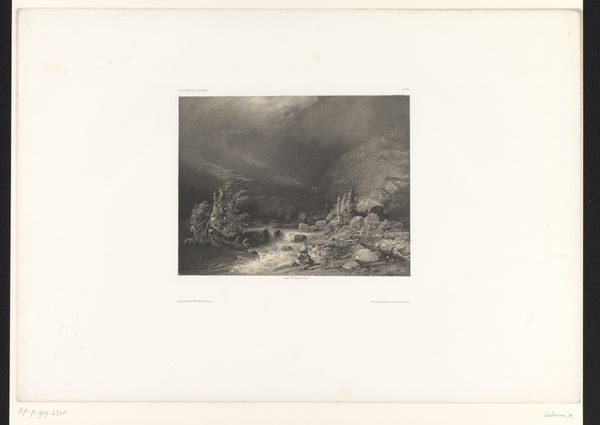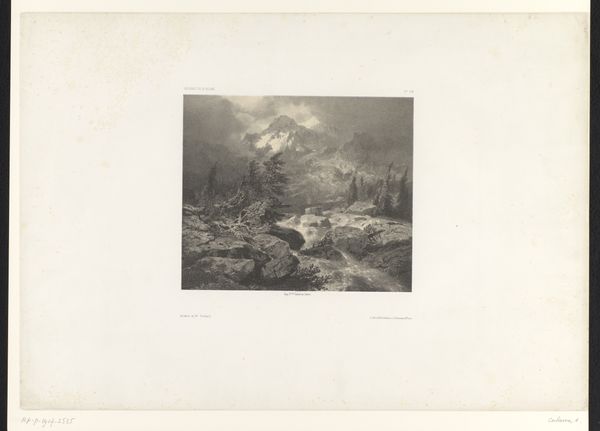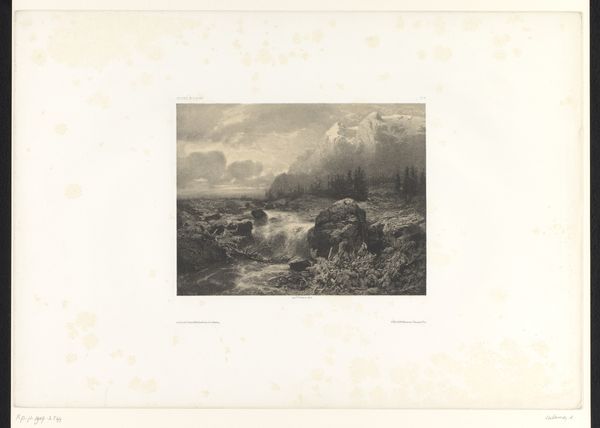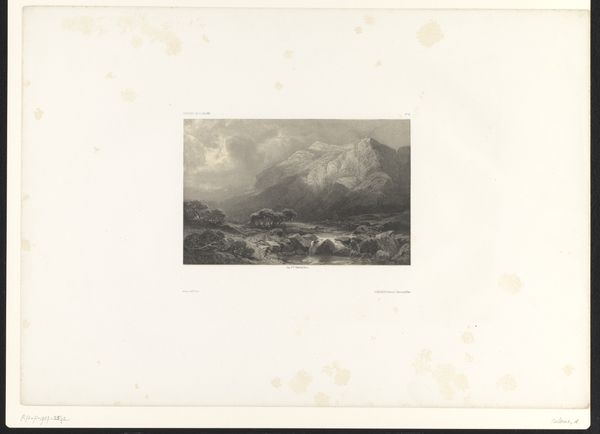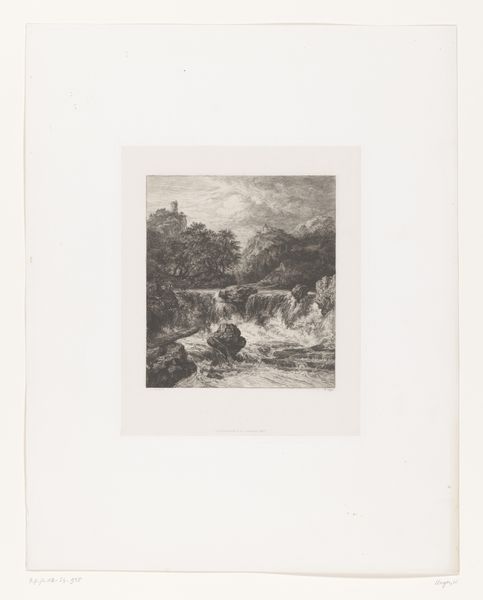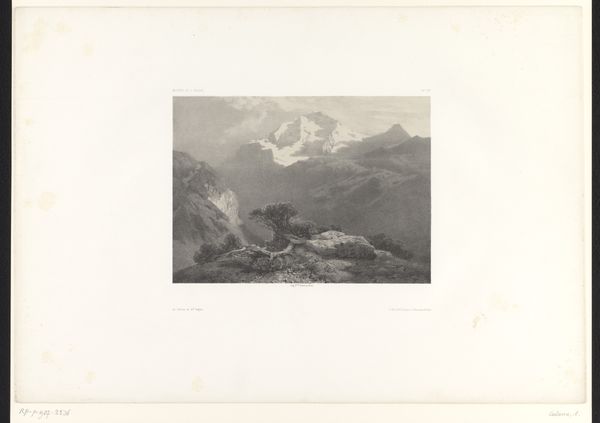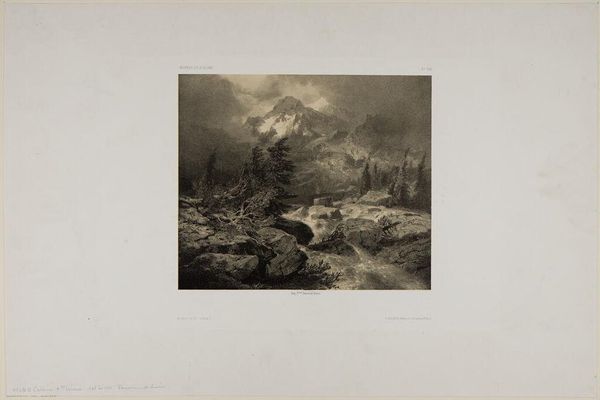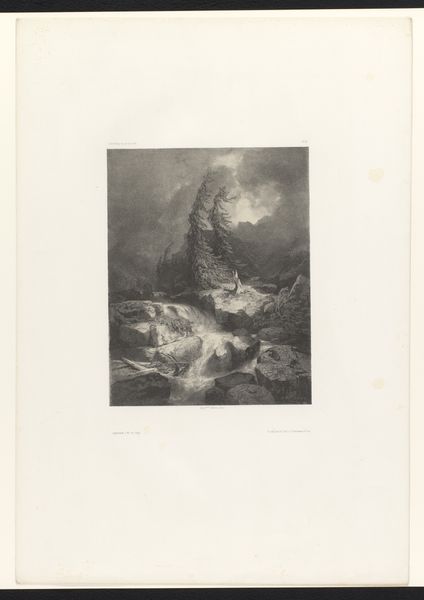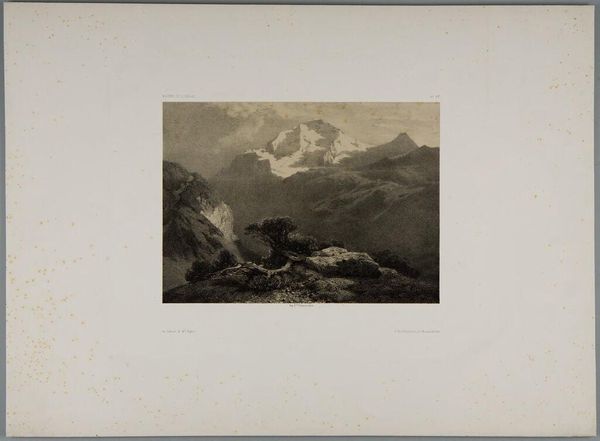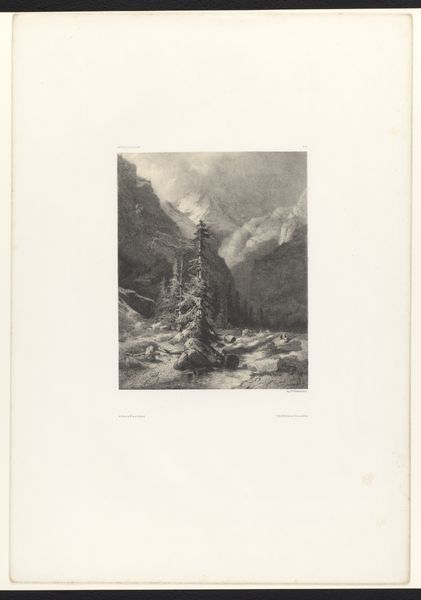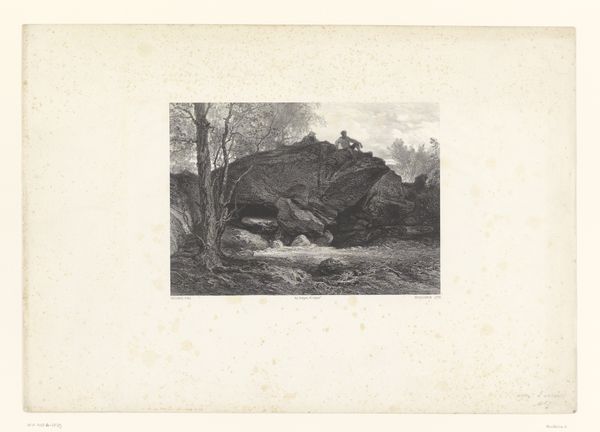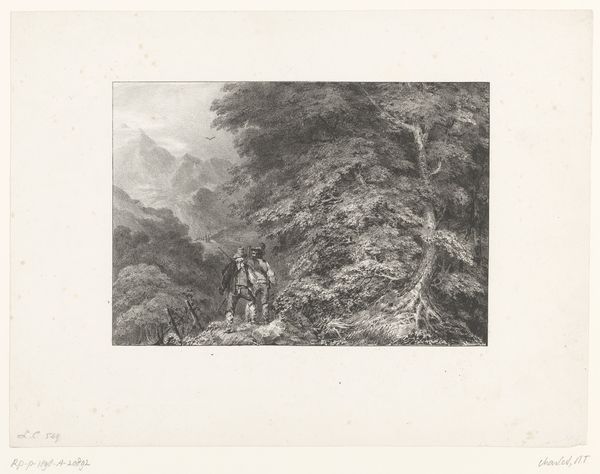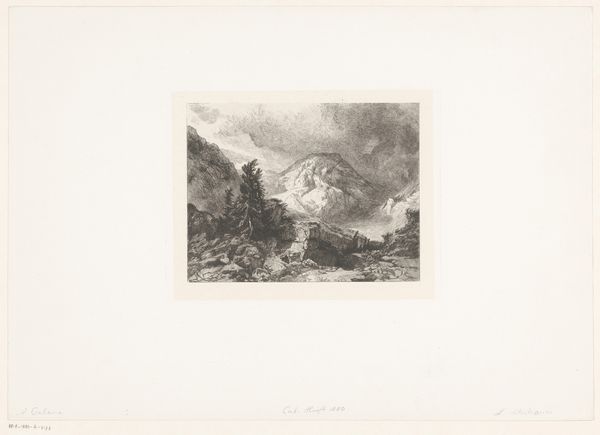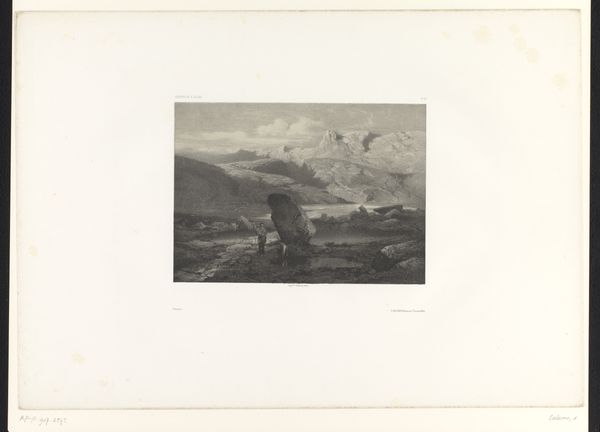
#
pencil drawn
#
tree
#
natural shape and form
#
light pencil work
#
pencil sketch
#
old engraving style
#
incomplete sketchy
#
hand drawn type
#
pencil drawing
#
pen-ink sketch
#
mountain
#
tonal art
Dimensions: height 388 mm, width 559 mm
Copyright: Rijks Museum: Open Domain
Curator: So, we’re looking at Alexandre Calame’s "Berglandschap met bomen en beek", a mountain landscape rendered in pencil sometime between 1852 and 1855. What strikes you first about it? Editor: The stark contrast—a whole scene built with the simple means of light and dark pencil work. There's a lot of visual weight for something so delicately crafted. Curator: It's fascinating how Calame situates himself, and us, in relation to nature. Romanticism often grappled with ideas of the sublime, with the awesome and terrifying power of nature laid bare. The role of pencil drawing here is interesting; a tool which, due to industrial advancements was becoming more accessible. Editor: Exactly. Pencil drawings like these democratized landscape art. You didn't need to be an oil painter to capture nature's essence; the pencil and paper sufficed. Curator: It invites consideration around themes of labor, accessibility, and the means through which art production can both enable and reflect wider socio-economic and cultural changes. And to consider art production's legacy. The work certainly echoes with echoes of past engravers like Dürer. Editor: Absolutely. There’s almost a printed quality. But at the same time, you feel the hand of the artist so directly; you understand how Calame might have spent hours refining tonal relationships. The raw, unfinished quality is particularly appealing here. Curator: Indeed, it pushes us to think about the concept of "finish," and what labor contributes to it, even the labor of imagination that informs material decisions. Considering this image within wider visual culture—where it stands alongside concurrent approaches to landscape and drawing that span from naturalist documentation to overtly political statements about land and environment feels valuable here. Editor: Ultimately it underscores the importance of both the artist's vision and the materials used to make this kind of beauty accessible. Curator: Agreed. I've gained a greater appreciation for the layers of social significance enmeshed within what appears, at first glance, as simply a mountain scene. Editor: And I am reminded of the tangible effort—the hours invested and material impact represented. Thanks for exploring this artwork together!
Comments
No comments
Be the first to comment and join the conversation on the ultimate creative platform.
